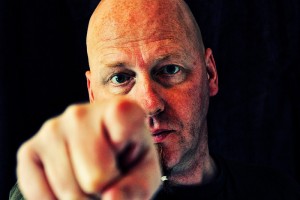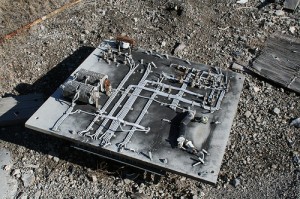Podcast: Play in new window | Download
Subscribe: Apple Podcasts | RSS
 In this episode, Chris and Jeff discuss the manner in which social influence affects engineers, how engineers can detect those who seek to exert influence, and how engineers can exert some influence of their own.
In this episode, Chris and Jeff discuss the manner in which social influence affects engineers, how engineers can detect those who seek to exert influence, and how engineers can exert some influence of their own.
- Jeff stumbled upon a variation of the Pomodoro Method, which was discussed last episode. In the Pelko Method, fear is used as a motivator. Hence, the tomato timer is replaced by one shaped like a hand grenade, and the task intervals are random, encouraging one to finish the task before their allotted time disappears.
- A book by Robert B. Cialdini, titled Influence: The Psychology of Persuasion, presents six facets of persuasion: Reciprocity, Consistency, Liking, Authority, Scarcity, and Social Proof.
- Jeff uses the pneumonic RCLASS to remember these facets (as suggested by reviewer Gale on Amazon).
- While each facet represents a mental shortcut that is largely useful, individuals skilled in the power of influence know how to structure requests and situations to direct these biases and tendencies against those they seek to persuade.
- RECIPROCATION – “We should try to repay, in kind, what another person has provided us.”
- Benefit: We accept reasonable offers of assistance, because working together allows us to be more effective than we can be alone. Those who violate this tenet are known as “moochers”, or “ingrates.”
- Downside: We are trained from childhood to detest obligation. Thus, we feel obligated to the future repayment of favors, gifts, and invitations, regardless of whether or not we actually wanted such endowments. This can lead to unfair exchanges.
- Examples: Address labels, note pads, key rings are included in charity requests because they double the level of contributions.
- The most highly valued favors are seen as significant, unexpected, personalized, and unconditional.
- We must be aware of how our perceptions change when we accept favors: loaned equipment, nice lunches, tickets to the ballgame.
- An even more powerful strategy: reciprocal concession, also known as “reject-then-retreat.” Under this scenario, a concession on the part of the requester creates an obligation on the part of the requestee to make a similar concession.
- Defense: If initial favor was not sincere, recognize reciprocation ploy, and allow yourself to escape the sense of obligation.
- CONSISTENCY – “Once we have taken a stand, we will behave in such a manner as to justify, and remain consistent, with our earlier decision.”
- Benefit: A high degree of consistency is perceived is to be at the heart of logic, rationality, stability, and honesty. Being consistent keeps us from having to revisit mentally difficult and emotionally challenging decisions.
- Downside: We can be led into making bad decisions by those who prefer that we not think too much about our actions. If I can get you to take a stand, I have set the stage for your automatic and ill-considered consistency.
- Example: “Would you be willing to contribute time to a charity?” Just asking the question increases positive response seven-fold.
- Those who exploit consistency often start small, as self-image is easily modified through seemingly insignificant actions.
- Defense: If you have sick feeling in the pit of your stomach, evaluate the situation for enforced consistency. Tell people you are aware of consistency principle, and allow yourself to change your mind, or reverse your course of action, when it is rational to do so.
- LIKING – “We like to do things for people we like.”
- Benefit: We tend to like those who share similar backgrounds or interests, thus those who are most likely to share favors and honor reciprocity.
- Downside: Our emotional response can be altered by clever influencers.
- Example: “Would you be willing to contribute time to a charity?” Just asking the question increases positive response seven-fold.
- Those who exploit consistency often start small, as self-image is easily modified through seemingly insignificant actions.
- Why do we like?
- Physical attractiveness — often unrecognized bias.
- Similarity — dress, interests, backgrounds, age, religion.
- Compliments — we are suckers for flattery, even when it isn’t true.
- Conditioning — Familiarity combined with positive experiences.
- Cooperation — We must “pull together.”
- Association — Models, athlete endorsements, sports teams, reflected glory.
- “Luncheon Effect” — We tend to become fonder of people and things experienced while eating.
- AUTHORITY – “We are trained from birth that obedience to proper authority is right and disobedience is wrong.”
- Benefit: Obeying authority figures normally keeps us safe and out of trouble.
- Downside: Individuals who wish to take advantage of us can take on the guise of an authority figure.
- Symbols of authority:
- Titles
- Clothing
- Trappings
- Defense: Be aware of authority power and how easily it can be faked. Ask yourself:
- Is this person truly an expert?
- How truthful can we expect the expert to be in this situation?
- SCARCITY — “We are far more sensitive to possible loss than we are to equivalent gain.”
- Benefit: Things that are easy to possess are typically worth less than those that are difficult to obtain.
- Downside: Our asymmetric response to loss and gain can be manipulated.
- We are most susceptible when we have seen abundance, and it has been replaced by scarcity. We hate to lose freedom. Once granted, freedoms will not be relinquished without a fight.
- Defense: Pursuit of scarcity produces an emotional response. So flag arousal and seek rationality. When we sense scarcity, ask why we want the item. Do we wish to use it, experience it, or possess it?
- SOCIAL PROOF – “The greater the number of people who believe an idea correct, then the greater the likelihood that the idea is, in fact, correct.”
- Benefit: Largely saves us from decision errors and social embarrassment with out having to re-evalute situation.
- Downside: The influence of social proof is strongest in periods of high uncertainty. We can be led astray by those who can manipulate or fake evidence of social response.
- Defense: Be aware of faked social proof. Look for people acting in an absence of solid data.

